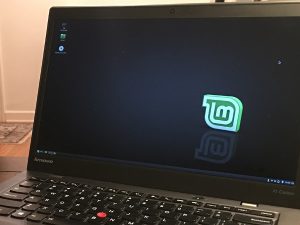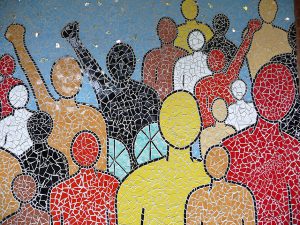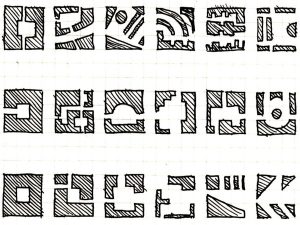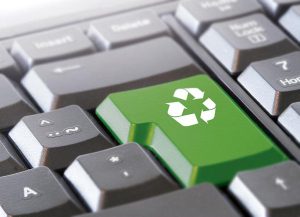Wikis - introduction
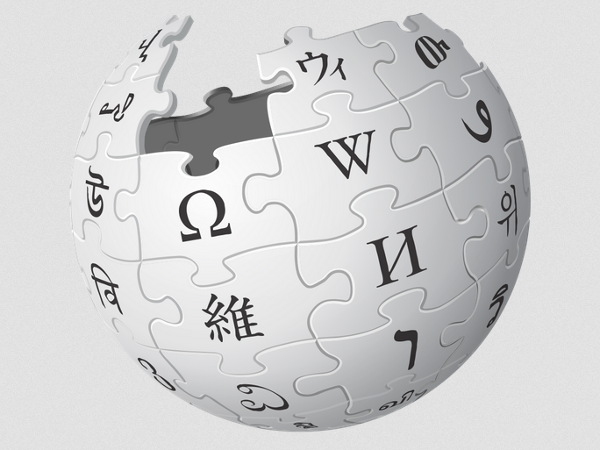
“Good thing it works in practice, because it sure doesn’t work in theory.” – Alex Pasternack
Contents
What are wikis?
Wikis are software packages that make it as easy as possible to edit material online, so that there can be an information commons, which will include a community of maintainers to effectively check, add to and update information, plus a set of rules for the community to abide by. Without an effective community, there is no information commons.
The most famous example is Wikipedia, but there are many more. Wikipedia allows anonymous contributors, but to edit some other wikis, people need to be accepted as a contributor.
Alternatively, you can have your own wiki to organise information for yourself, without inviting anyone else to edit – a community of one, if you like.

Ward cunningham, US programmer and inventor of the wiki, in 1995. Pic: Carrigg Photography, CC BY-SA 3.0
History
The first wiki / user-editable website was (and still is) WikiWikiWeb, launched by Ward Cunningham in 1995. He named his idea after the Hawaiian word for ‘quick’.
Wikipedia was launched in 2001, by Jimmy Wales and Larry Sanger, and is in the top ten most visited websites in the world, with versions in almost all languages, and around 6 million articles in English alone.
There are now hundreds of thousands of wikis in existence. One of our favourites is the P2P Foundation Wiki, set up in 2006 by Michel Bauwens, to help organise his extensive notes on commons / peer-to-peer production, and to open them up to other people to maintain.

Mediawiki is the free software that runs Wikipedia.
What are the benefits of wikis?
Wikis are suitable for holding an information commons, and making it easy to run (although it’s also possible to have a top-down corporate wiki that’s not a commons, where content is dictated by one person or a small group of people, undemocratically).
To be most useful, a wiki needs to be easy to read and easy to edit. The issues around readability are the same as for textbooks – legibility, clarity and organisation of information.
A wiki is a very good collaborative tool – easy to edit by a group of people. MediaWiki (the most popular wiki software) keeps all the edits – nothing gets thrown away. So if there’s disruption, it’s easy to revert to an older version.
Wikipedia is free, and at least as accurate as Encyclopedia Britannica. That’s because it has such a vast army of editors. The accuracy of other wikis will depend on the size, knowledge and lack of bias of its editorial team. Quality depends on the community, the rules, and the way the rules are enforced. A small community won’t have the time to continually edit a busy wiki, and so quality may suffer.
How to edit Wikipedia, for absolute beginners. See below, search for more detailed guides and see MediaWiki’s site once you’ve got the hang of it.
Wikipedia has a large raft of policies that are themselves maintained by the community of editors. This is what makes a meaningful information commons – that the rules themselves are maintained by the community.
What can I do?
Using a wiki
Wikipedia is the obvious choice for unbiased, evidence-based information. The community is so large that bias is usually edited out; and if there’s no evidence base for claims, it often says so clearly. So in the entries for ‘Psychic’ or ‘Dowsing’, for example, in the first paragraph it says that although there are many practitioners, there is no scientific evidence for their claims.
However, although easy to use, the information on Wikipedia, for many technical topics, is not necessarily for beginners. There will be links to other related topics – and from those pages there will be other links, and so soon you can lose track of the original topic. There is a ‘Simple English Wikipedia’, that is more accessible for beginners in complex subjects.

Jimmy Wales and Larry Sanger, co-founders of Wikipedia. Pics: Niccolò Caranti, CC BY-SA 4.0 / Larry Sanger, CC BY-SA 2.5
Editing a wiki
Wikipedia editors can either register or remain anonymous. Others are invite-only (e.g. the P2P Foundation Wiki) or controlled / used by just one person.
If you’re a beginner, start with small edits – for example, correcting spelling / grammar. You don’t need technical skills for basic editing of Wikipedia. Updating a link can be more complicated; adding a link or a reference still harder. But try to be meticulous. Disruptive editors can be banned / permissions can be revoked by administrators.
Wikipedia is a good example to start with, as it’s by far the largest wiki. MediaWiki is the software that runs Wikipedia, but there are lots of different options, so different wikis may behave slightly differently. Get yourself an account on Wikipedia, learn about MediaWiki syntax (easier than it sounds – it’s explained in the MediaWiki article on Wikipedia, and there are lots of learning materials on the MediaWiki site), and then go in and edit.

P2P Foundation wiki – a ‘knowledge commons’ for pooling resources on peer-to-peer practices.
Be aware that your edit will go live immediately – and stay there unless someone changes or reverts it. Some of the more popular topics are editable by established editors only, to prevent vandalism. Becoming an established editor requires you to register, make at least 10 edits and wait 4 days.
When you view an article, next to each header is the word ‘Edit’ in brackets. Click on edit to change that section, or use the edit tab at the top of the page to edit anything in the article (first-time editors will see a welcome page – click ‘Start editing’). Make changes, then click on ‘Publish changes’ (or if you’re just practising, click ‘Cancel’, which will take you back to the live Wikipedia page). As a good Wikipedian, you should also say what you’re changing and why (in the box at the bottom of the edit page).
When editing, internal links to other Wikipedia pages will be surrounded by two square brackets: [[ … ]]. This and other conventions can be found on the MediaWiki site.
A more detailed introduction to editing Wikipedia.
If you create an account, you can be informed (via a ‘Watch this page’ link) about changes on that page – you’ll get an email if someone edits it, even if you haven’t edited it yourself. This is one of the crucial things that helps manage vandalism.
Back on the Wikipedia page, at the top there is a ‘Talk’ tab. Feel free to edit this page – it’s just talk about the topic, and won’t go live on the page. For example, you can ask questions about content or suggest additions. Another tab is ‘View history’, in which there’s a record of the development of the article, allowing you to compare any previous versions (select ‘Previous edits’ and then click the ‘Compare selected revisions’ button). Also if you click on a user’s name you can see all their contributions, and you can communicate with them.
MediaWiki is by far the most common wiki software, but any software will have tutorials on how to use it – on their site, on Youtube etc.
Wikipedia has strict rules around not including original research. It’s an encylopedia, and is therefore a secondary resource, and facts must be referenced (you’ll see ‘Citation needed’ in some articles). Textbooks and peer-reviewed journals are considered reliable secondary resources, but aside from those, there are grey areas. Different wikis will have different policies.

Simple English Wikipedia is not for simple topics, but for explaining difficult topics in plain English for beginners.
Building a wiki
First, decide if it’s already covered by Wikipedia, or do you have a different angle? If you do, and you have a website, ask your web host if they allow MediaWiki as an installation. Ask them to install it for you (building your own wiki is beyond a basic topic introduction). You’ll get a subdomain – e.g. wiki.yourwebsite.etc. plus admin rights. Administering a wiki, including managing contributors, is quite a techie role; but the important thing is to weave contributors into a commoning community.
Keep it simple. The more technically-minded might want to build a complex interface, but then it makes it much more difficult for less technical people to use. You can have different rules from Wikipedia – e.g. you can include original work, or opinions. There are right- or left-wing wikis, religious wikis etc.

Federated Wikis (Fedwikis) look very different from wikis, are used for more collaborative, rather than authoritative work, and pages aren’t held on a central server.
Fedwikis
A Fedwiki (federated wiki), also invented by Ward Cunningham, is a new kind of wiki in that each Fedwiki has a single owner / editor, unlike Wikipedia. Each author can pull content from any Fedwiki and can make new or modified content available as a peer of every other Fedwiki author. Fedwiki has no shared repository – just shared tools, and access and reuse rights to published content that are ‘flat’. Fedwiki has no rules (just some conventions of page style) and no community of Wikipedian moderators. These features mean that there is a focus on creativity, autonomy and collaboration rather than consensus / authority.
Specialist(s)
Thanks to Simon Grant of Cetis LLP and the P2P Foundation Wiki for information.
The specialist(s) below will respond to queries on this topic. Please comment in the box at the bottom of the page.
 Simon Grant: “I’ve had a varied work life including teaching physics, lecturing human-computer interaction and running a workers co-op. I’m an occasional contributor to Wikipedia and a significant contributor to the P2P Foundation Wiki, originated by Michel Bauwens. I’ve been learning about the commons, P2P and about several of the networks that work in this area. I enjoy singing in very small good choirs, and paragliding. Searching for ‘asimong’ finds a lot more.”
Simon Grant: “I’ve had a varied work life including teaching physics, lecturing human-computer interaction and running a workers co-op. I’m an occasional contributor to Wikipedia and a significant contributor to the P2P Foundation Wiki, originated by Michel Bauwens. I’ve been learning about the commons, P2P and about several of the networks that work in this area. I enjoy singing in very small good choirs, and paragliding. Searching for ‘asimong’ finds a lot more.”

